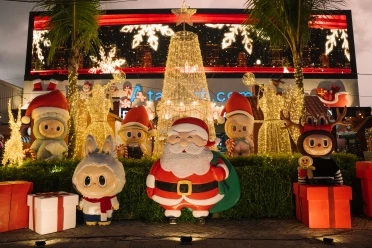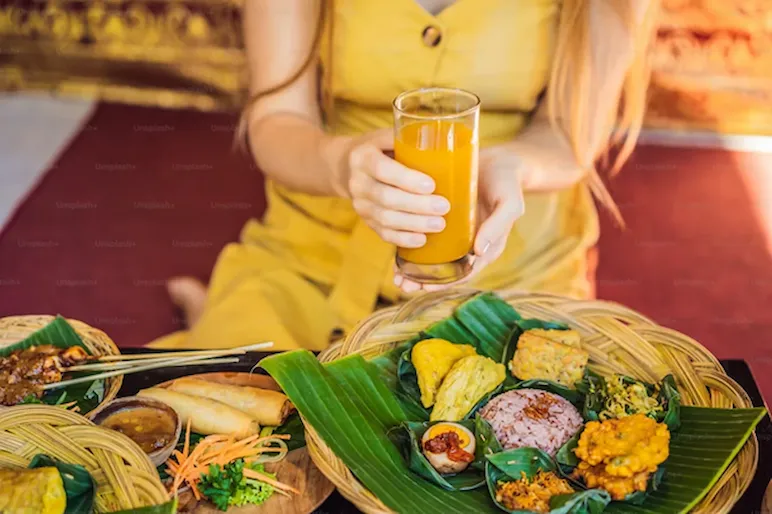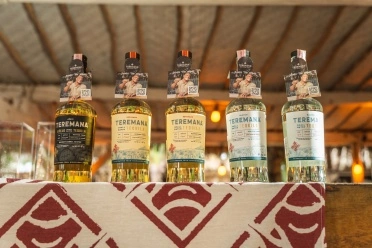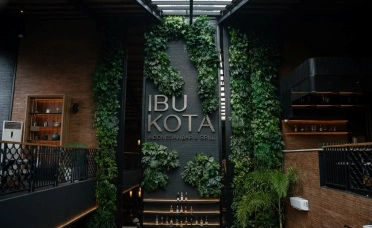Karangasem, located in eastern Bali, is celebrated for its vibrant cultural heritage and deeply rooted traditions. Among its many rituals, the Yamaraja Tradition in Bugbug Village stands out as an extraordinary event, showcasing a unique blend of artistry and spirituality. This sacred tradition, held annually during Purnama Kasa (the first full moon in the Balinese calendar), represents a communal effort to safeguard the village from misfortunes and ensure prosperity.
This sacred tradition represents a communal effort to safeguard the village from misfortunes and ensure prosperity.
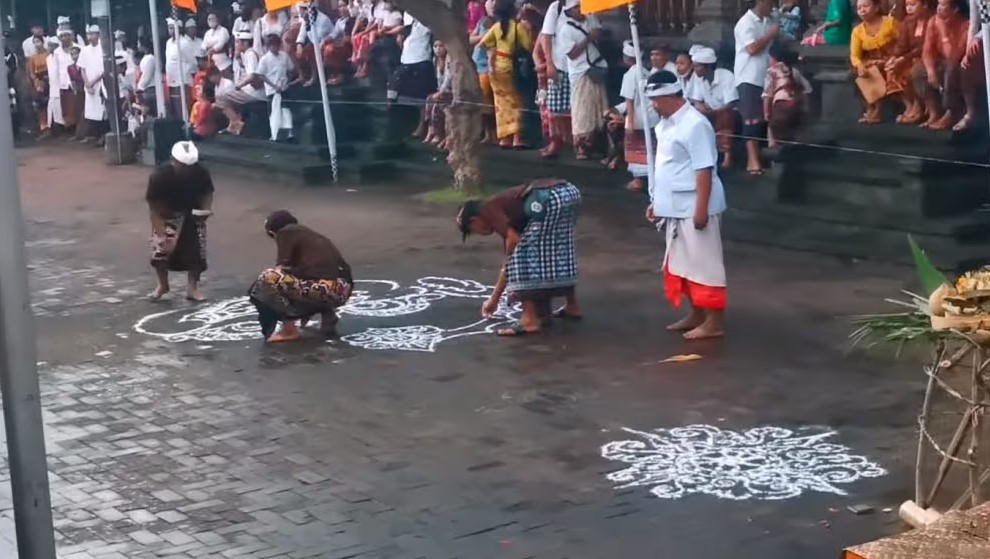
The Sacred Artistic Depiction
The Yamaraja Tradition is deeply connected to the spiritual essence of Hinduism. Rooted in the teachings of Siwa Siddhanta, this ritual features the creation of Rerajahan Yamaraja, a large artistic depiction of Dewa Yamaraja. Known as the manifestation of Ida Bhatara Ratu Gede Sakti, the revered deity is believed to embody protection and the power to ward off plagues and diseases. According to the ancient Balinese scripture Lontar Yama Purana Tatwa, Dewa Yamaraja is both a creator and a protector, invoked to maintain harmony and balance. Through the Yamaraja Tradition, villagers seek his divine blessings to ensure Bugbug Village remains free from calamities while fostering collective well-being.
Unique Ritualistic Practices
The Yamaraja Tradition is celebrated in conjunction with Usaba Manggung Aci Sumbu, a major ceremony in Bugbug Village. The focal point of the event is the creation of the Wongwongan Yamaraja, an elaborate representation of Dewa Yamaraja drawn on the sacred grounds of Jaba Pura Bale Agung, a key site in the village. The process begins on the night of Purnama Kasa, referred to as jegjeg bulan, when the full moon is at its zenith. Villagers gather to bring the intricate artwork to life, adhering to strict guidelines that have been passed down through generations. Every stroke and detail must be completed in one night without corrections, emphasizing the precision and dedication involved.
Materials and Methods
The creation of the Rerajahan Yamaraja involves the use of natural materials and traditional techniques. The primary medium is pamor, a fine white powder derived from lime or kapur sirih. This powder is mixed with water to form a paste used for outlining and detailing the design. Artisans employ sharpened twigs from the Dapdap tree, shaped like pencils, to craft the intricate details. These twigs vary in size to suit different parts of the design, from the bold outlines to the delicate accents. The colossal artwork spans the entire courtyard, a testament to the skill and devotion of the village artists.
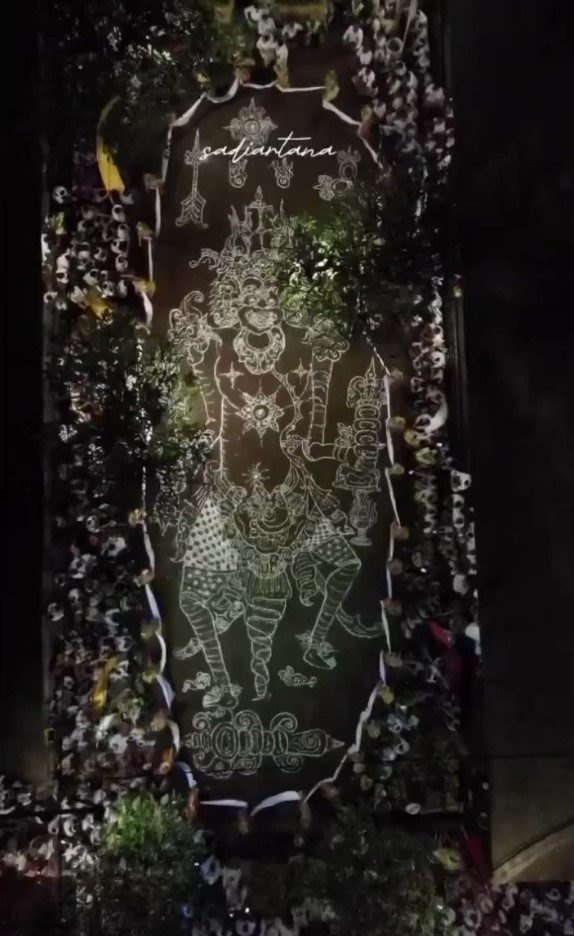
Iconography and Symbolism
The Rerajahan Yamaraja vividly portrays the deity as a powerful guardian, drawing from Balinese shadow puppetry. Its crowned head reflects royal stature, with a fierce expression symbolizing its role as a destroyer of evil. The body, adorned with intricate jewelry, signifies abundance, while the limbs' dynamic, dance-like gestures embody power and grace. Traditional weapons like the Gada, Nagapasa, Cakra, and Trisula surround the figure, representing protection and victory over malevolent forces. The ritual concludes with prayers and offerings, inviting Dewa Yamaraja to bless the community.
Cultural and Spiritual Impact
The Yamaraja Tradition is not merely a ritual; it is a profound expression of Bugbug Village’s cultural identity. The villagers believe that during the ceremony, Dewa Yamaraja visits the community, revitalizing agricultural lands and fostering harmony. The ritual is also credited with safeguarding crops from pests and ensuring a bountiful harvest, highlighting its role in sustaining the agrarian lifestyle. This sacred tradition is a source of immense pride for the community, drawing attention from neighboring villages and tourists alike. Its elaborate rituals and artistic grandeur offer a glimpse into Bali’s spiritual depth, showcasing the island’s ability to preserve its ancient heritage amidst modernity.
Despite the challenges of modernization, the people of Bugbug remain steadfast in upholding the Yamaraja Tradition. Passed down through generations, this annual ceremony serves as a reminder of the enduring bond between the community and their spiritual beliefs.



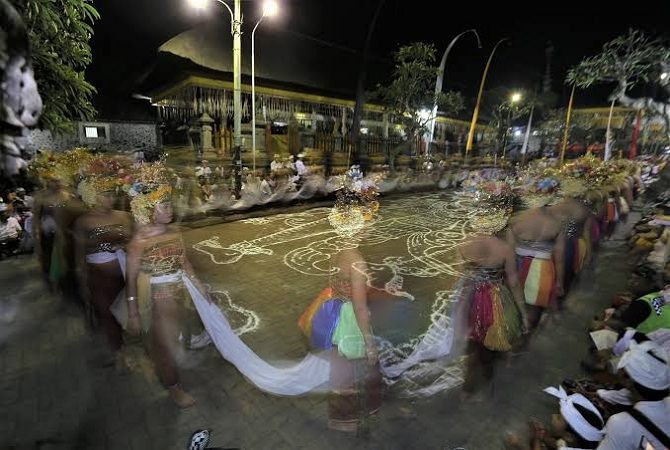
 Billy Bagus
Billy Bagus
 Jan 20, 2025
Jan 20, 2025


